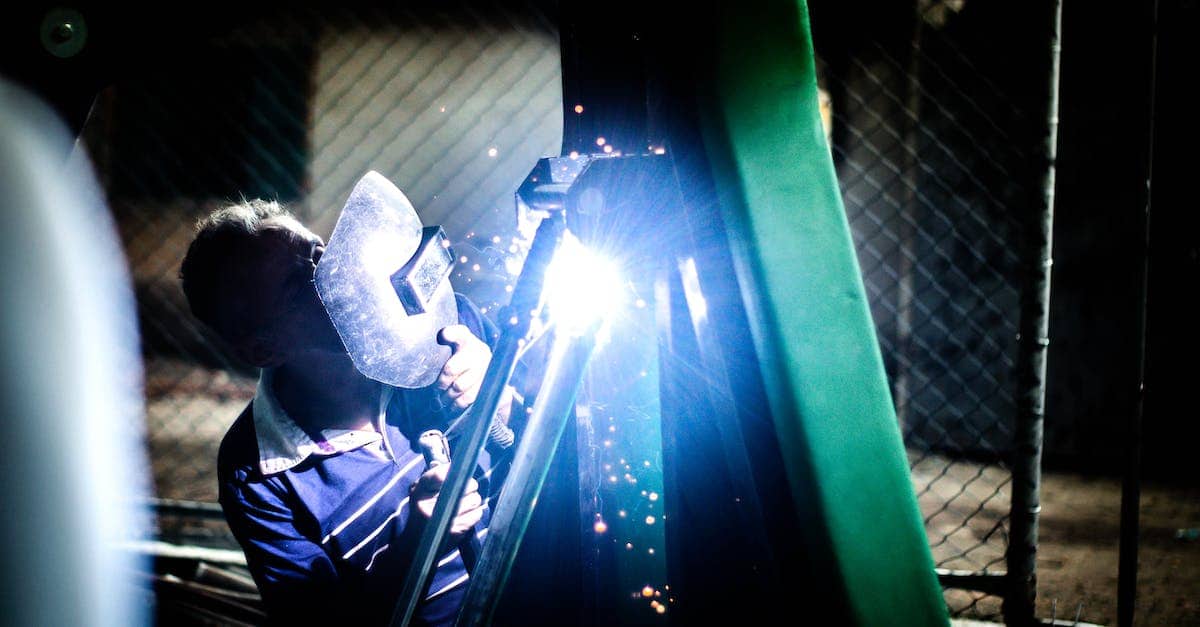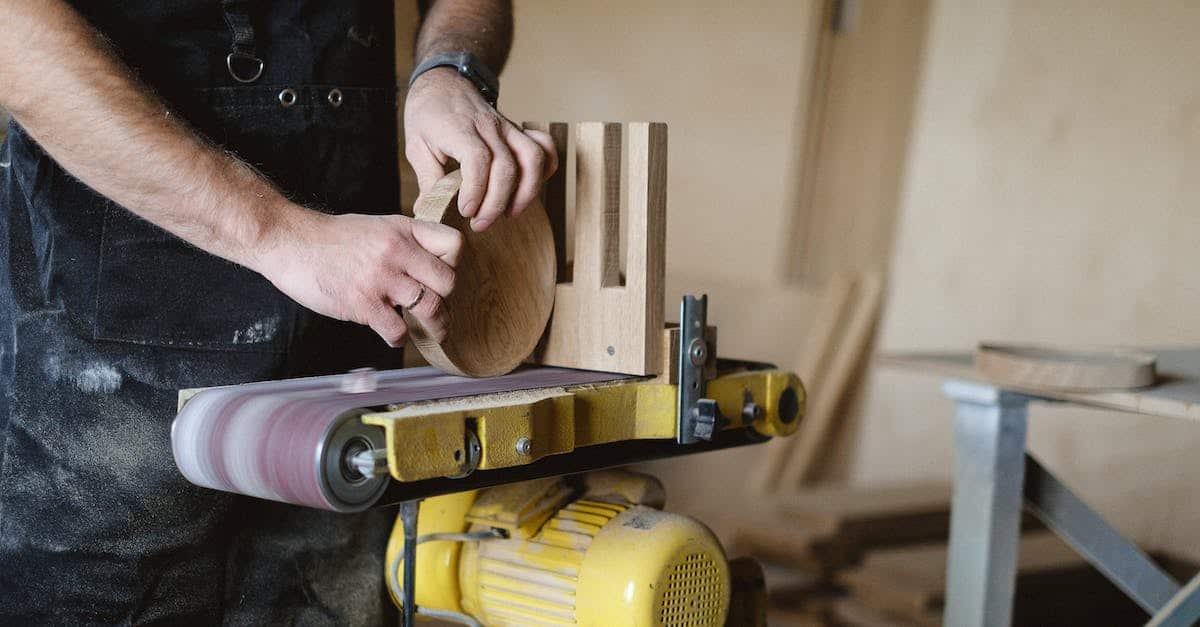Carpentry is a skilled trade that has been around for centuries. It involves working with wood to create structures, furniture, and decorative items. While it may seem like a straightforward profession, carpentry is a challenging field that requires precision, knowledge, and physical labor. In this article, we will explore why carpentry is considered hard and the skills and qualities needed to excel in this field.
Understanding Carpentry as a Skilled Trade
Carpentry is a skilled trade that involves working with wood to create structures, furniture, and decorative items. It requires a high level of skill and expertise to excel in this field. Fundamentals of Carpentry such as measuring, cutting, and joining wood require precision and attention to detail. Skills Development and Learning Curve in carpentry is steep, and it takes years of practice to become a skilled carpenter. Challenges in Carpentry include working with different types of wood, complex designs, and unique client requests. Technical Aspects of Carpentry such as reading blueprints, using power tools, and working with specialized equipment require knowledge and expertise.
Key Takeaways:
- Carpentry is a skilled trade that requires precision, knowledge, and physical labor.
- The learning curve for carpentry is steep, and it takes years of practice to become a skilled carpenter.
- Technical aspects of carpentry such as reading blueprints, using power tools, and working with specialized equipment require knowledge and expertise.
Understanding Carpentry as a Skilled Trade
Carpentry is a skilled trade that involves shaping, constructing, and installing wooden structures and objects. It is a craft that requires a high level of expertise and precision to create functional and aesthetically pleasing pieces. In this section, we will explore the art and craft of carpentry and compare it to other skilled trades.
The Art and Craft of Carpentry
Carpentry is not just about cutting wood and nailing it together. It is a complex craft that involves a deep understanding of the properties of wood, the tools used to shape it, and the techniques used to join it. A skilled carpenter must be able to read blueprints and plans, measure and cut wood accurately, and use a variety of tools, including saws, chisels, planes, and drills.
Carpentry also requires creativity and an eye for design. A skilled carpenter can take a simple piece of wood and turn it into a beautiful and functional piece of furniture or structure. They must be able to visualize the end product and work backwards to create a plan of action that will result in a successful outcome.
Carpentry vs. Other Skilled Trades
While carpentry is a skilled trade, it is not necessarily the hardest or most challenging one. Each skilled trade has its own unique set of challenges and requirements. For example, plumbing requires a deep understanding of pipes, fittings, and water flow, while electrical work requires knowledge of circuits, wiring, and voltage.
However, carpentry is unique in that it combines both art and craft. It requires both technical expertise and creativity to create a successful outcome. Carpentry also has a long history and tradition, dating back to ancient times when humans first began using wood to construct shelters and tools.
In conclusion, carpentry is a skilled trade that requires a high level of expertise and precision. It is a craft that combines both technical knowledge and artistic creativity to create functional and aesthetically pleasing pieces. While it is not necessarily the hardest or most challenging skilled trade, it is a unique and important one that has contributed to the development of human civilization.
Fundamentals of Carpentry
https://www.youtube.com/watch?v=y8W7KbJTg7A&embed=true
Carpentry is a skilled trade that involves working with wood to create functional and decorative structures. It requires a combination of technical knowledge, creativity, and physical ability. In this section, we’ll explore the fundamentals of carpentry, including basic woodworking techniques and tools of the trade.
Basic Woodworking Techniques
To become a skilled carpenter, you need to have a solid understanding of basic woodworking techniques. These include measuring, cutting, shaping, joining, and finishing wood. You also need to know how to read and interpret blueprints and schematics.
Measuring is a critical aspect of carpentry. You need to be able to accurately measure the dimensions of the wood you are working with to ensure that your project is precise and fits together properly. Cutting involves using saws and other tools to cut wood to the desired shape and size. Shaping involves using tools such as chisels and planes to create intricate designs and details in the wood.
Joining is the process of connecting two or more pieces of wood together. There are various techniques for joining wood, including butt joints, lap joints, and mortise and tenon joints. Finishing involves sanding, staining, and sealing the wood to protect it from moisture and other environmental factors.
Tools of the Trade
Carpentry requires a variety of hand tools and power tools. Hand tools include hammers, chisels, saws, planes, and screwdrivers. Power tools include drills, circular saws, jigsaws, routers, and sanders.
Hand tools are essential for precision work, while power tools are ideal for cutting and shaping large pieces of wood quickly and efficiently. It’s important to choose the right tool for the job and to use them safely and correctly.
In conclusion, carpentry is a challenging trade that requires a combination of technical knowledge, creativity, and physical ability. By mastering the fundamentals of carpentry, including basic woodworking techniques and tools of the trade, you can become a skilled carpenter capable of creating functional and decorative structures out of wood.
Skills Development and Learning Curve
https://www.youtube.com/watch?v=GxHEumT7ydw&embed=true
Learning carpentry requires time, effort, and dedication. It is a skill that requires both technical knowledge and practical know-how. As a beginner, it is essential to start with simple projects and gradually work your way up to more complex ones. Here are some tips that can help you develop your carpentry skills and navigate the learning curve.
Apprenticeship and Training
One of the best ways to learn carpentry is through an apprenticeship program. This type of program allows you to work under the guidance of experienced carpenters who can teach you the necessary skills and techniques. Apprenticeship programs typically last between two to four years and combine classroom instruction with on-the-job training.
If you are not able to participate in an apprenticeship program, you can still learn carpentry through vocational schools or community colleges. These institutions offer courses and programs that cover the basics of carpentry, such as reading blueprints, using hand and power tools, and understanding building codes.
Continuous Learning and Practice
Carpentry is a skill that requires continuous learning and practice. As you gain experience, you will encounter different challenges and situations that will require you to adapt and learn new techniques. It is essential to stay up-to-date with the latest tools, materials, and building codes.
One way to continue learning is to attend workshops, seminars, and conferences. These events are an excellent opportunity to learn from experienced carpenters and network with other professionals in the field.
Another way to improve your carpentry skills is through practice. The more you practice, the more confident you will become in your abilities. Start by working on simple projects and gradually work your way up to more complex ones. Don’t be afraid to make mistakes – they are an essential part of the learning process.
In addition to practice, mentorship is also an effective way to improve your carpentry skills. Find a mentor who can guide you and provide feedback on your work. A mentor can also help you identify areas where you need to improve and provide advice on how to do so.
By following these tips and staying committed to your craft, you can develop the necessary skills to become a proficient carpenter. Remember, learning carpentry is a journey, not a destination. Enjoy the process and take pride in your accomplishments.
Challenges in Carpentry
Carpentry is a skilled trade that demands a high level of precision, patience, and problem-solving skills. It is a physically demanding job that requires stamina, physical strength, and manual dexterity. In this section, we will explore the challenges that make carpentry such a rewarding yet demanding pursuit.
Physical Demands and Precision
Carpentry involves working with heavy materials and tools, which can put a lot of strain on your body. You may be required to lift heavy pieces of wood or operate power tools for extended periods. Additionally, carpentry requires a high level of precision because even a small mistake can ruin an entire project.
To meet the physical demands of carpentry, you need to be in good physical shape. You need to have the stamina to work long hours without getting tired and the physical strength to lift heavy materials. Moreover, you need to have good hand-eye coordination and manual dexterity to work with tools accurately.
Problem-Solving and Attention to Detail
Carpentry also requires problem-solving and attention to detail. You need to be able to think ahead and anticipate potential problems before they arise. You need to have the ability to read blueprints and plans and identify any errors or inconsistencies.
Furthermore, you need to have a keen eye for detail and be able to measure and cut wood accurately. You need to be able to identify imperfections in the wood and work around them to create a finished product that is both functional and aesthetically pleasing.
In conclusion, carpentry is a challenging but rewarding profession that demands a high level of physical and mental skills. To be successful in this field, you need to have the patience, stamina, physical strength, manual dexterity, problem-solving skills, and attention to detail.
Technical Aspects of Carpentry
https://www.youtube.com/watch?v=gc-6-p7lgUk&embed=true
Carpentry involves a wide range of technical skills that require precision and attention to detail. In this section, we will explore the technical aspects of carpentry that make it a challenging skill to master.
Measuring, Cutting, and Joinery
One of the most fundamental aspects of carpentry is measuring, cutting, and joinery. Accurate measurements are essential for ensuring that the finished product fits together perfectly. Whether you are building a cabinet or a house, you need to be able to measure and cut accurately to ensure that everything fits together properly.
Joinery is another crucial aspect of carpentry. It involves connecting two or more pieces of wood together to create a strong, stable structure. There are many different types of joinery techniques, including mortise and tenon, dovetail, and biscuit joinery. Each technique requires a different set of skills and tools, and it takes years of practice to master them all.
Blueprints and Mathematical Skills
Carpentry also requires a strong understanding of blueprints and mathematical skills. Blueprints are detailed plans that show the exact measurements and specifications for a project. You need to be able to read and interpret blueprints accurately to ensure that the finished product meets the client’s expectations.
Mathematical skills are also essential for carpentry. You need to be able to calculate angles, measurements, and fractions accurately to ensure that everything fits together perfectly. A small mistake in your calculations can lead to a significant problem down the line, so it’s crucial to be precise.
In conclusion, carpentry is a challenging skill that requires a wide range of technical skills. Measuring, cutting, and joinery, as well as blueprints and mathematical skills, are just a few of the technical aspects of carpentry that make it a difficult skill to master. With dedication, practice, and a willingness to learn, however, anyone can become a skilled carpenter.
Materials and Construction Techniques
When it comes to carpentry, the materials and construction techniques used can greatly affect the difficulty of a project. Here are some things to consider:
Types of Wood and Materials
Different types of wood have different properties and characteristics, which can affect how they are used in construction. For example, some woods are harder and more durable than others, while some are more prone to warping or splitting. It’s important to choose the right type of wood for your project, based on factors such as its intended use, the desired appearance, and your skill level.
In addition to wood, there are many other materials that can be used in carpentry, such as metal, plastic, and composite materials. Each material has its own unique properties and challenges, and may require different tools and techniques to work with.
Advanced Construction Techniques
As you become more experienced in carpentry, you may want to try more advanced construction techniques. These can include things like joinery, where pieces of wood are connected without the use of nails or screws, or advanced shaping techniques, such as carving or turning.
While these techniques can create beautiful and intricate designs, they can also be quite challenging to master. It’s important to start with simpler projects and work your way up to more complex ones as you gain experience and confidence.
Overall, carpentry can be a challenging but rewarding skill to learn. By choosing the right materials and construction techniques for your project, and taking the time to develop your skills and knowledge, you can create beautiful and functional pieces that will last for years to come.
Safety and Best Practices
Safety Protocols and Equipment
When it comes to carpentry, safety is of utmost importance. You should always follow safety protocols and use the necessary equipment to protect yourself from harm. Personal Protective Equipment (PPE) such as safety glasses, gloves, and hard hats should be worn at all times when working with power tools or handling materials. Not wearing the necessary PPE during a carpentry job is one of the most common mistakes that professionals make, and it can result in serious injuries.
It’s also important to maintain good housekeeping to eliminate hazards and risks. Keep your workspace clean and organized, and always be aware of your surroundings. Work on improving ergonomics during work, and be prepared to work in different weather conditions. Stay alert and on top of carpentry safety conditions on the jobsite.
Responsible Handling of Tools
Carpentry involves the use of various tools, and it’s important to handle them responsibly. Always use the right tool for the job and make sure they are in good working condition. Inspect your tools before each use and replace any damaged or worn out parts.
When using power tools, make sure to follow the manufacturer’s instructions and safety guidelines. Always keep your fingers and hands away from the blade or bit, and never remove safety guards. Use clamps or other devices to secure your workpiece, and never hold it with your hands.
In conclusion, carpentry can be a challenging profession that requires precision, knowledge, and physical labor. However, by following safety protocols and using the necessary equipment, you can protect yourself from harm and ensure a successful and rewarding career in carpentry.
Career Path and Opportunities
https://www.youtube.com/watch?v=WkMdp3XPWLk&embed=true
Becoming a Skilled Carpenter
Becoming a skilled carpenter requires dedication, hard work, and a willingness to learn. It is not an easy career path, but it can be rewarding if you have a passion for working with your hands and creating things. To become a carpenter, you will need to complete an apprenticeship program, which typically lasts for four years. During this time, you will learn the basics of carpentry, such as how to use hand and power tools, how to read blueprints, and how to work with different types of wood.
After completing your apprenticeship, you can become a journeyman carpenter and work on your own or for a company. However, if you want to advance your career and become a master carpenter, you will need to continue your education and gain more experience. This can include taking courses in advanced carpentry techniques, such as framing, roofing, and finishing work, as well as gaining experience working on larger and more complex projects.
Growth and Demand in the Field
The demand for skilled carpenters is expected to grow in the coming years, as more people look to build and renovate their homes and businesses. According to the Bureau of Labor Statistics, employment of carpenters is projected to grow 8 percent from 2020 to 2030, which is faster than the average for all occupations.
In addition to the demand for carpenters, there are also many opportunities for advancement and specialization within the field. For example, you can become a construction supervisor, project manager, or even start your own carpentry business. With the right skills and experience, you can also work on larger and more complex projects, such as building bridges, stadiums, and other large-scale structures.
Overall, while carpentry is a challenging and demanding career path, it can be a rewarding and fulfilling one. With the right training, experience, and dedication, you can become a skilled carpenter and enjoy a successful career in this growing field.
The Rewards of Carpentry
Carpentry is a challenging craft that requires a lot of hard work and dedication, but it also offers a great deal of personal fulfillment and job satisfaction. In this section, we will explore some of the rewards of carpentry and how they can make all the hard work worth it.
Personal Fulfillment and Job Satisfaction
One of the most rewarding aspects of carpentry is the sense of personal fulfillment that comes from creating something with your own hands. Whether you are building a piece of furniture, a house, or a bridge, the satisfaction of seeing your work come to life is hard to beat. Carpentry also offers a great deal of job satisfaction, as you are able to see the tangible results of your hard work every day.
Community Impact and Creativity
Carpentry also has a significant impact on the community, as it is an essential part of building and maintaining our physical infrastructure. From building homes to repairing bridges, carpenters play a vital role in keeping our communities safe and functional. Additionally, carpentry offers a great deal of creativity, as you are able to use your skills to design and build unique and beautiful pieces of furniture or structures.
Overall, while carpentry may be a challenging and demanding craft, it offers a great deal of personal and professional rewards. Whether you are looking for personal fulfillment, job satisfaction, or the opportunity to make a positive impact on your community, carpentry has something to offer. So, if you are considering a career in carpentry, don’t be discouraged by the challenges – the rewards are well worth it.










